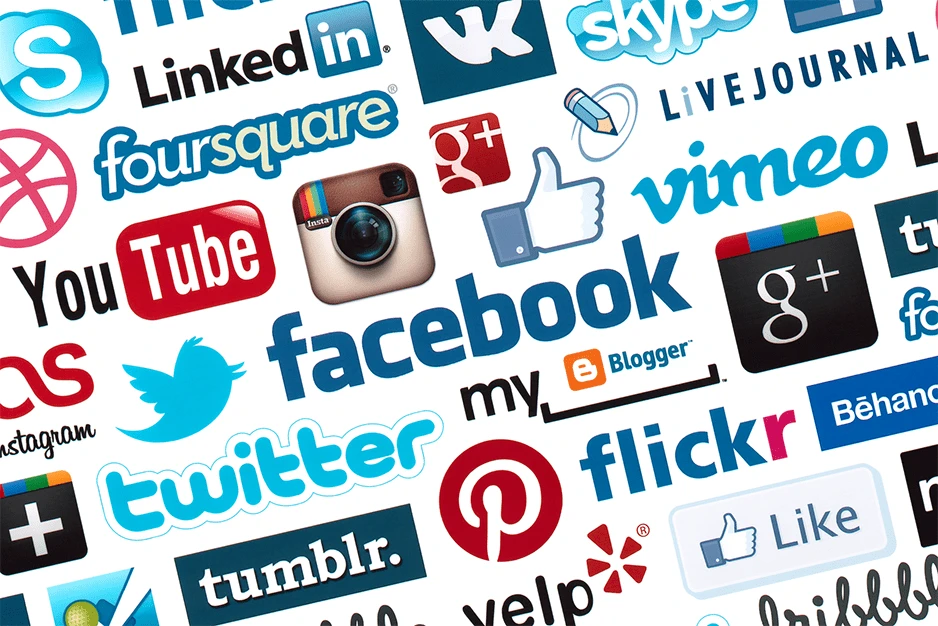How often you post on social media Networks?
How want to connect with followers without driving them away?
Strike the balance between informative and annoying
Good content can be found in a multitude of places, and once you find it all, the next question you may ask yourself is how often you can share.
Our post on curating content sparked this exact question, asked in the comments by Ryan Battles. I quite like the way Ryan phrases it, and my bet is that he speaks for many of us curators:
we started tweeting content from Buffer, ranging from 3x per day to 7x per day. How often do you all share content? We are looking to balance being informative and being annoying.
How frequently Buffer shares to social media
Before hunting down the right answer to the frequency question (if such a thing even exists), I thought it might be helpful to share the one answer I can give with 100 percent certainty: how frequently we share to social networks at Buffer.
(Our social media automation plan includes engagement outside the confines of this schedule, but in general terms, this is how often we post.)
Twitter – 14 times per day, from midnight to 10:00 p.m. Central Time, never more than once per hour; seven times per day on weekends, from 3:00 a.m. to 9:00 p.m., roughly every three hour.
Facebook – 2 times per day, seven days a week, 10:08 a.m. and 3:04 p.m.
LinkedIn – 1 time per day, 8:14 a.m., no weekends
Google+ – 2 times per day, 9:03 a.m. and 7:04 p.m., no weekend
You’ll see some of the science behind our sharing frequency below, but also know that we have set our schedule—like almost everything at Buffer—as an experiment and are constantly iterating based on our analytics.
As far as an explanation for why we tweet at 3:00 a.m., we want to connect with our global audience. Three in the morning, Central Time, is 9:00 a.m. in London. If you don’t have a global audience, you might not get the same value out of tweeting in the middle of your night.
(Or maybe 3:00 a.m. is a good time to send, if you believe the Informercial Theory. Keep reading …)
The optimal frequency for posting on social media
To ‘know’ the BEST is an impossibility. You can only predict and measure.
I hesitate to start off this discussion with such a tepid answer to the question of posting frequency. But Dan Wilkerson of LunaMetrics is right.
Predict.
Measure.
Repeat.
There aren’t a whole lot of shortcuts here, but with the right data, we can at least gain a head start on the prediction process. Saying beyond a shadow of a doubt that X is the best number of times to post to Twitter and Y is the best number to post to Facebook would be misleading.
There is well-researched data, for sure. But consider it as a jumping off point for customizing your own optimal schedule.
How often to post to Facebook
Social Bakers studied three months’ worth of Facebook content from major brands and found that top brands average one post per day.
As a general rule, Socialbakers found that posting once per week on Facebook was so low as to lose connection with your audience and posting more than twice per day was crossing the line into annoying.
Its 2011 study found that the sweet spot is five to 10 posts per week.
Additional research by Track Social in 2012 confirmed that there is indeed a drop in response per post beyond the one-post-per-day mark.
When a brand posts twice a day, those posts only receive 57% of the likes and 78% of the comments per post. The drop-off continues as more posts are made in the day.
However, Track Social went a step further to see the effect that multiple posts per day had on a page’s total responses in a given. In this instance, there was no significant change as post frequency increased. This suggests you won’t lose out on conversations if you increase how often you post.
The below graph represents a composite score of Track Social’s Facebook data. There is a consistent dropoff after the first post each day, but the drop is not as precipitous as you might think.
One caveat: Most of this research comes from before Facebook’s recent algorithm change. These days, the feed values fresh content highly. (As a result, media companies can post four to 10 times more often than brands and still see engagement.)
An Edgerank Checker study posted on the Moz blog determined that one way to counteract the algorithm change might be to publish more frequently – as often as you have fresh, compelling content to share.
How often to post to Twitter
Along with their analysis of Facebook post frequency, Social Bakers also studied Twitter, taking a random sample of 11,000 tweets from top brands and concluding that three tweets per day is the point where brands start seeing big engagement.
In the chart above, total engagement rate measures the total number of replies, retweets, and favorites. Average engagement rate is total engagement divided by the number of tweets sent on a given day.
In both cases, three tweets was the magic number for optimal posting.
Three tweets isn’t that many, though. Could this really be the magic mark for optimal frequency? Are we all doing waaaay more work than we need to?
Depends.
Specifically, it depends on what you want to measure. The engagement per tweet measure can tell you at what point your individual tweets reach their maximum performance levels. Track Social found this to be a similar number to Social Bakers. Per Track Social, response per tweet peaks at five and then drops off.
So if you want to wring the most value out of every tweet you send, tweet about five times each day.
The other way to look at this is with response per day, a clearer measure of the total amount of interaction a brand has with its audience. When Track Social observed this stat, the recommendation changed.
If you want to wring the most value out of your Twitter presence as a whole, tweet up to 30 times per day.
Basically, what this chart is saying is that the more you tweet, the more opportunities you have to engage with fans, and the more total response you will receive. It is a study in scale. Greater volume should correlate to greater total response, and the chart above shows this to be true.
The takeaway here would be in observing the spikes, when responses jumped at different volumes of tweets. Spike #1 occurred around 4-5 tweets per day, Spike #2 at 11-15 tweets, and Spike #3 at 21-30.
Alexandra Skey of Spokal has a helpful note here: Small business owners are better off adhering to the 5 tweets per day rule because it gets you the maximum bang for your stretched buck. You may not have time for 20+ tweets per day (14 at Buffer is a job unto its own some days). Make the most of the time you do have.
How often to post on LinkedIn and Google+
As you might expect, research is deeper for Facebook and Twitter than it is for any other social network. Frequency data for LinkedIn and Google+ is much harder to dig up.
The best guideline for LinkedIn sharing comes from the site itself, which published a marketing report claiming 20 posts per month allows you to reach 60 percent of your audience.
Twenty posts per month equals one post per weekday.
Advice for Google+ is a little more of a stretch. Even heavy users of the service can differ on the “right” frequency.
Perhaps it’s best to think about which social network most closely resembles the format and audience of G+. Facebook could be considered the closest model, so you can start with Facebook’s five to 10 posts per week model.
Something to consider: The incredibly short life cycle of a tweet
It takes 18 minutes for a tweet to be over the hill.
Moz’s Peter Bray ran the numbers and found the 18-minute mark to be the time it takes for half of a tweet’s retweets to occur. In other words, once a tweet has been live for 18 minutes, it has reached the peak of its engagement. Leftover engagement might follow, but its glory days are done.
The life cycle of a tweet is shorter than most every other post on social media (Pinterest may enjoy the longest life, for what it’s worth). Expectations on Twitter reflect this aura of immediacy, too. Convince and Convert found that 42 percent of customers expect a support request to be answered on Twitter within 60 minutes.
If you’re looking for a fountain of youth for your tweets, you might find solace in this:
Presumably, the longer a tweet sits at the top of your page, the longer its life. The more you tweet, the shorter the lifespan of each individual tweet.
Facebook’s life cycle is much longer, relatively speaking
Facebook posts reach their half-life at the 90-minute mark, nearly four times longer than Twitter.
The 90-minute mark was found by Wisemetrics in their study of Twitter and Facebook life cycles. They found that 24 minutes was the median engagement point for Twitter and 90 minutes for Facebook. For Facebook, a post reaches 75 percent of its potential in the first 5 hours (vs. three hours for Twitter).
Twitter starts off much faster than Facebook, but then their shelf-life crosses at 87%. The few last retweets come much later on Twitter than the last engagement for a Facebook post. This is probably due to virality which is much more prominent on Twitter than on Facebook.
Wisemetrics goes into a great level of detail on their analysis, even explaining why popular data on the topic has varied—notably Betaworks’ claim of five minutes and bitly’s claim of 2.8 hours. It’s worth a read if you’re interested.
Bottom line: The first couple hours are the most important time for your tweet.
Schedule your posts when your audience is online
Frequency and scheduling go hand-in-hand in so many ways in your social media marketing strategy that it’s hard to plan one without the other.
Followerwonk is a favorite tool of ours to see when your followers are online and to plan accordingly. There’s even integration with Buffer so that you can marry the two together. Here is a sample graph from Followerwonk, charting the most active hours for your followers:
If you would rather hack your social timing yourself, you can consider syncing your post schedule to time zones. Fifty percent of Americans live in the Eastern time zone. A full eighty percent live in Eastern and Central combined. Publishing in accordance with these time zones could be hugely helpful for a national business.
West Coasters can schedule tweets really early in their morning (which would be not-so-early in Central and Eastern time) and avoid posting late at their West Coast night.
The late-night infomercial effect
There is, as you might imagine, a flip side to scheduling your posts when your audience is online. We’ll call it the late-night infomercial effect—another fun tidbit from Peter Bray. It goes a little something like this:
When there’s nothing else on, you’re more likely to watch an infomercial.
When there’s little else being tweeted, your tweets are more likely to stand out.
Certain email marketing statistics follow a similar line of thinking. You could see greater open rates and clickthroughs when your email is one of the only ones in the inbox. The data below suggests that 8:00 p.m. to midnight gets the highest opens and clicks.
Being one of the lone voices in the inbox could prove beneficial. The same could be said for social media.
Maybe posting on off hours isn’t all that bad after all?
Takeaways
The temptation to write off social media frequency as “it depends” is huge, but I think that the numbers from a few studies do show some general starting points for where to begin.
Post to Twitter at least 5 times a day. If you can swing up to 20 posts, you might be even better off.
Post to Facebook five to 10 times per week.
Post to LinkedIn once per day. (20 times per month)
And always be testing, experimenting, iterating, and improving. The line between informative and annoying may be super slim, but it’s one that you can find with a little practice.
How frequently do you post to social media? Have you found that there’s a point of diminishing returns? I’d love to hear what you think, if you don’t mind giving away some secrets!





